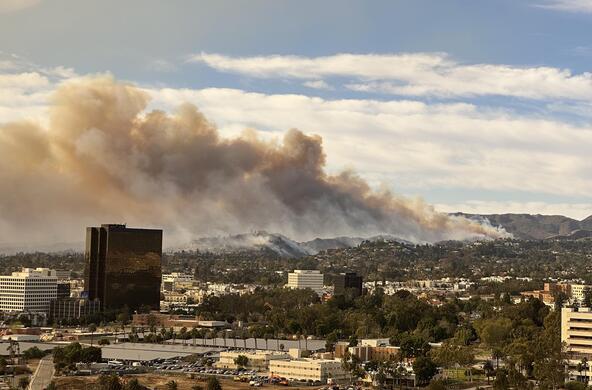There was some good news on the environment last week. In the 20-state area that participates in a cap-and-trade program to reduce emissions of nitric oxide (NOx) from power plants, the emissions declined 32 percent from 1997 to 2005.
NOx is, of course, a precursor to the formation of ozone in the lower atmosphere, and ozone is a major health risk to those with asthma, emphysema and cardiovascular disease. Corresponding to the 32 percent decline in NOx is a 13 percent decline in ozone concentrations and a 16 percent decline in the deposition of NOx from the atmosphere throughout the region. These reductions represent a turnaround to the long-term increases in ozone reported in the atmosphere of much of North America and Europe.
Five years ago, scientists reported that the lower emissions from power plants in the northeastern United States could be seen in satellite images of the region. Now, the Cary Institute's Tom Butler reports that regulating NOx emissions has been highly effective in reducing ozone concentrations in our region. His long-term studies of rainfall chemistry show a decline in nitrate and acidity, which are both related to NOx.
The regulation of NOx has been controversial. It is well known that coal-fired power plants are a source of about 25 percent of the nation's NOx emissions — largely stemming from the nitrogen content of coal. But utilities using coal-fired power plants argued that the technology to remove NOx from their smokestacks was simply too costly. And, they argued, NOx is added to the atmosphere by a lot of other activities, including the metabolism of soil microbes.
The chemical reactions by which NOx produces ozone in the atmosphere were established in the laboratory nearly 30 years ago. Long-term records show increasing ozone in the eastern United States and rising contents of nitric acid in rainfall, as a result of a series of chemical reactions in the atmosphere. But reductions in NOx during the regional blackout in 2003, produced only modest reductions in ambient ozone content, about 4 percent. Now, with Butler's long-term records of the chemical content in rainfall, we have direct evidence that a reduction in emissions from power plants shows up in lower nitrate contents in rainfall.
It is worth reflecting on why environmental scientists argue for the regulation of substances that pollute our air and water. When science showed that DDT affected the reproduction of the bald eagle, whose populations were declining, scientists argued DDT should be banned.
Certainly, we all like bald eagles, but the deeper concern stems from what the eagles were telling us about the potential effects of DDT on human biochemistry. Similarly, environmental scientists argue for regulations on NOx emissions, not only because they form acid rain, which harms forests, but also because they help form ozone, which harms humans.
In Washington, our politicians are in a heated debate over the extent of government regulations of food, drugs and pollution. Regulations increase costs, so most business leaders prefer fewer regulations. But regulations protect the long-term health of the environment for humans and other life forms, and a lack of regulations in the past has resulted in some of the worst toxic pollutant episodes now awaiting cleanup.
Regulating NOx emissions is a first step in recognizing and removing large human additions of reactive nitrogen to the environment, with a large number of effects we will come to regret in an unregulated situation.






